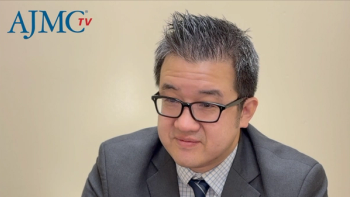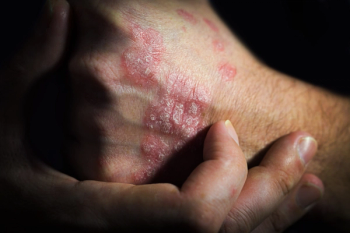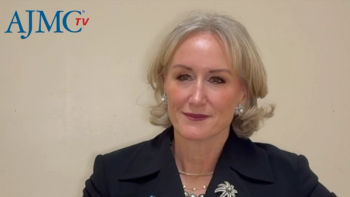
DVRd Improves MRD Negativity, Maintains Quality of Life in Multiple Myeloma
Key Takeaways
- DVRd therapy significantly improves MRD negativity and PFS, showing potential as a frontline treatment for NDMM patients who are transplant-ineligible or deferred.
- The CEPHEUS trial highlights DVRd's greater treatment durability and tolerability, with more patients remaining on treatment through cycle 36 compared to VRd.
Two posters presented at the 2025 European Hematology Association Congress support combination therapy with daratumumab, bortezomib, lenalidomide, and dexamethasone (DVRd) in transplant-ineligible or deferred newly diagnosed multiple myeloma.
The subcutaneous combination therapy daratumumab (Darzalex), bortezomib (Velcade), lenalidomide (Revlimid), and dexamethasone (DVRd) improves minimal residual disease (MRD) negativity and progression-free survival (PFS) while maintaining health-related quality of life (HRQOL) in patients with transplant-ineligible or transplant-deferred newly diagnosed
The CEPHEUS trial enrolled adult patients with NDMM who were either transplant-ineligible (TIE) or transplant-deferred (TD).1 All patients had an Eastern Cooperative Oncology Group (ECOG) performance status of 0 to 2 and an International Myeloma Working Group (IMWG) frailty score of less than or equal to 1. Participants were randomized 1:1 to receive either DVRd or the standard triplet therapy of bortezomib, lenalidomide, and dexamethasone (VRd). The trial design emphasized not only clinical outcomes but also patient-reported outcomes (PROs), with both efficacy and HRQOL as primary and secondary end points.
Efficacy Outcomes and HRQOL
The first poster focused on clinical efficacy outcomes. A total of 395 patients were enrolled, with 197 randomized to DVRd and 198 to VRd. After a median follow-up of 58.7 months, more patients remained on treatment through cycle 36 in the DVRd arm (n=135) compared with the VRd arm (n=106), suggesting greater treatment durability and possibly better tolerability. DVRd therapy demonstrated significantly improved MRD negativity and prolonged PFS, reinforcing its disease-modifying potential in a frontline setting.
These results are consistent with earlier studies, including the MAIA and PERSEUS trials,2,3 that have shown the clinical advantage of incorporating daratumumab into initial myeloma regimens.
The second poster reported findings related to HRQOL.4 PROs were evaluated at baseline and then longitudinally throughout treatment: during each 28-day treatment cycle through cycle 8, and then every third cycle until disease progression or discontinuation. PRO instruments included the EORTC QLQ-C30, EORTC QLQ-MY20, and the EQ-5D-5L visual analogue scale (VAS). Baseline PRO compliance exceeded 85% and remained above 81% through cycle 36 in both treatment arms.
By cycle 36, patients in both treatment arms reported meaningful improvements from baseline in global health status: DVRd (8.2; 95% CI, 4.9-11.5) and VRd (8.5; 95% CI, 5.0-12.0). Physical functioning improved slightly in both groups—DVRd (3.6) and VRd (5.1)—with no significant difference (P = .5410). Fatigue also decreased in both groups, with DVRd showing slightly less fatigue (–4.7 vs –5.4). DVRd was associated with a numerically greater reduction in pain scores (–14.8 vs. –8.7; P = .0697), though this difference did not reach statistical significance.
Additional metrics, including QLQ-MY20 disease symptoms and EQ-5D-5L VAS, improved similarly across both treatment arms. The median time to symptom improvement and time to symptom worsening were comparable. Subgroup analyses in TIE patients showed consistent HRQOL results.
Together, these data support DVRd as a highly effective regimen that not only deepens clinical responses but also preserves quality of life, which is especially valuable in older or frailer patients less likely to undergo transplant.
References
1. Bahlis NJ, Usmani SZ, Facon T, et al. Daratumumab, bortezomib, lenalidomide and dexamethasone (DVRd) vs. VRd in transplant-ineligible/transplant-deferred newly diagnosed multiple myeloma: Phase 3 CEPHEUS trial cytogenetic subgroup analysis. Poster presented at: EHA2025 Congress; June 12-15, 2025; Milan, Italy.
2. Facon T, Moreau P, Weisel K, et al. Daratumumab/lenalidomide/dexamethasone in transplant-ineligible newly diagnosed myeloma: MAIA long-term outcomes. Leukemia. 2025;39(4):942-950. doi:10.1038/s41375-024-02505-2
3. Sonneveld P, Dimopoulos MA, Boccadoro M, et al; PERSEUS Trial Investigators. Daratumumab, bortezomib, lenalidomide, and dexamethasone for multiple myeloma. N Engl J Med. 2024;390(4):301-313. doi:10.1056/NEJMoa2312054
4. Hungria V, Usmani SZ, Facon T, et al. Health-related quality of life in patients with transplant-ineligible or transplant-deferred newly diagnosed multiple myeloma (MM) in the phase 3 CEPHEUS trial. Poster presented at: EHA2025 Congress; June 12-15, 2025; Milan, Italy.
Newsletter
Stay ahead of policy, cost, and value—subscribe to AJMC for expert insights at the intersection of clinical care and health economics.












































